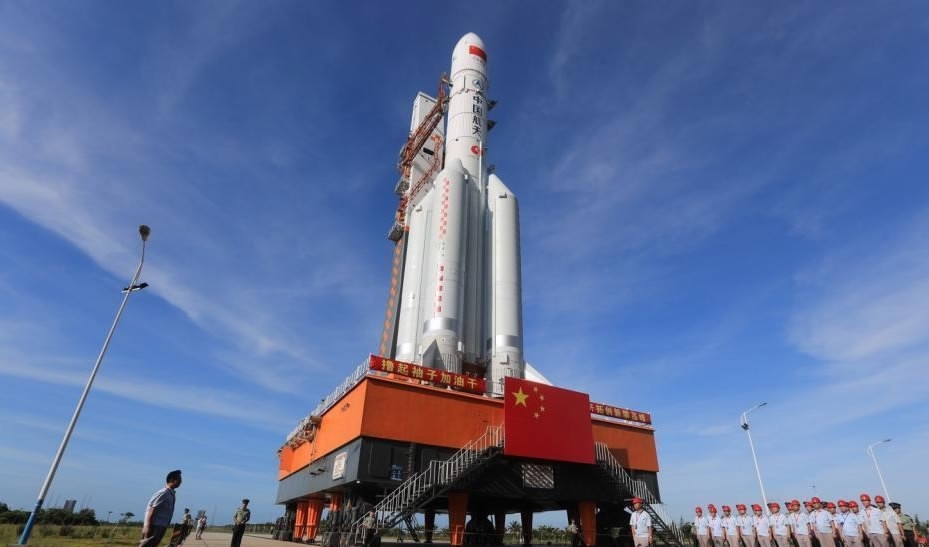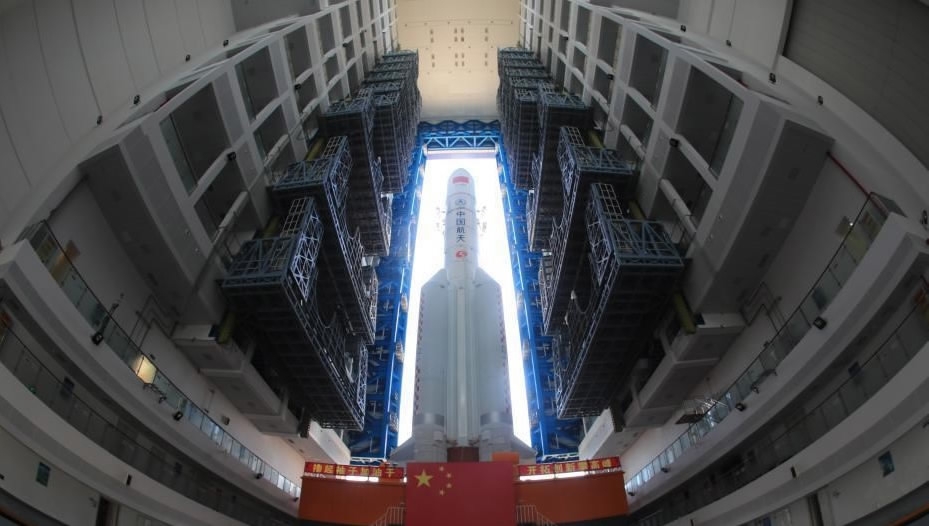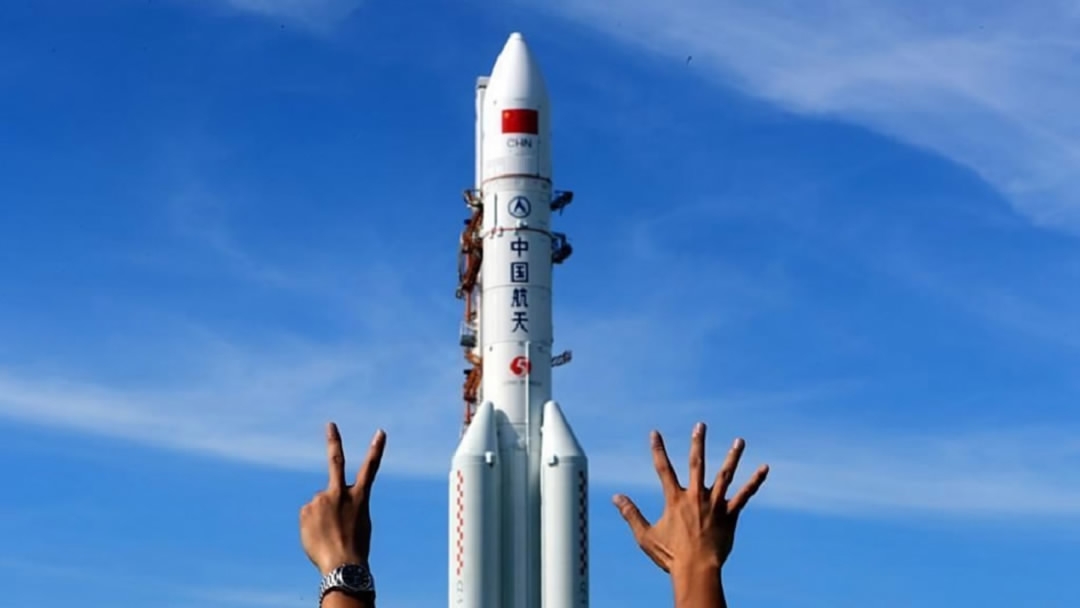China's Long March-5 Y2 carrier rocket was scheduled to take off on Sunday from the Wenchang Space Launch Center, in south China's Hainan Province.
The fueling process already started on Saturday afternoon.
The rocket will carry the Shijian-18 communications satellite designed by the China Academy of Space Technology, debuting the new Dong Fang Hong-5 (DFH-5) satellite platform.

The second launch of the Long March-5 is scheduled, July 2, 2017. /Photo via China News
As the next generation of geostationary telecommunications satellite, the Dong Fang Hong-5 is designed to provide a high-capacity, long-endurance platform for high-orbit communications, remote sensing, space probe and scientific experiments.
During the mission, the Shijian-18 satellite will operate on geosynchronous orbit, providing communication services over China's territories and conducting a number of experiments.
The satellite's on-board transponders will also improve access to the Internet and allow public users to have more television channels.
What is the Long March-5?

The Long March-5 sitting at the Wenchang Space Launch Center, ready to rocket. /Photo via China News
The Long March-5 carrier rocket is a Chinese heavy lift launch system, developed by the China Academy of Launch Vehicle Technology. It is the first Chinese launcher with a design focusing on liquid rocket propellants from the ground up.
The rocket belongs to the fifth generation of Long March rockets which will serve China’s future plans in space exploration.
As the country's strongest carrier rocket, the Long March-5 has a payload capacity of 25 tons in low Earth orbit and 14 tons in geostationary transfer orbit. The carrying capacity is about 2.5 times that of the current main model Long March carrier rockets.
Since the Long March-5 looks much "fatter" than other rockets in the Long March series, it has been dubbed "Chubby 5".
The development of the Long March-5

The development of the Long March-5. /CGTN Photo
The history of the Long March-5 project could be dated back as early as 1986, when its initial research was funded by the National High-tech R&D Program (also known as the 863 Program).
The purpose of the 863 Program was to propel the development of advanced technologies in a wide range of fields, including aerospace technology.
After two decades, the Long March-5 project was officially approved by the China National Space Administration in 2006. The development of the initial prototype started in 2009, and the project entered trial period in 2013.
The Long March-5 Y1 made its maiden flight from Wenchang Space Launch Center on November 3, 2016, carrying the Shijian-17 satellite to geosynchronous transfer orbit.
The main purposes of the very first mission were to verify the design and performance of the new rocket, and test the rocket's flight program.
The current mission will be the last for the Long March 5 rocket family before sending the Chang'e 5 lunar probe to the moon later this year and the Mars probe in 2020.
Fun facts about "Chubby-5"

Photo via China News
'Cold-hearted'
The weight of propellant makes up more than 90 percent of the total weight of the rocket. With this amount of low temperature liquid, the Long March-5 is colder than you can ever imagine.
The lowest temperature limit is -273.15 degrees Celsius (about -459.67 Fahrenheit) at which all molecular movement stops. The liquid inside Chubby-5 could reach -253 degrees Celsius (about -423.4 Fahrenheit). That's icy cold alright!
'The run-in period'
Much like in human relationships, a rocket and a satellite need time to get used to one another. Just as the saying goes, "With great power comes great responsibility," the satellites atop the Long March-5 are usually quite heavy. Thus, they risk damaging the rocket. In order for the duo to work smoothly together, three dimensional models of satellites were used by rocket designers to conduct analyses. Repeated testing and subsequent adjustments helped reduce potential risks.
'Selfie enthusiast'
As a "star" in the rocket family, the Chubby-5 "loves" to be photographed. In order to capture as many key actions as possible during the flight, the Long March-5 is equipped with 21 cameras, almost twice as many as in other rockets. Two types of cameras will be used for the mission, high-speed and normal ones.










